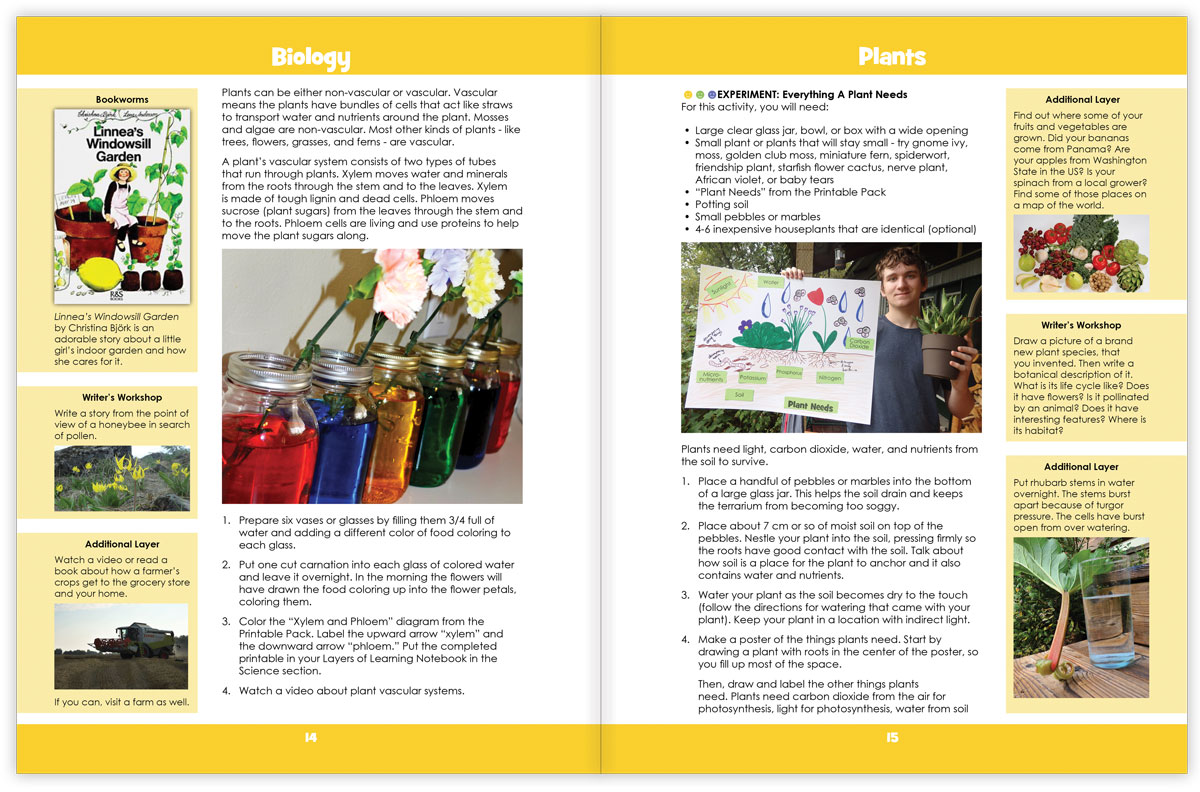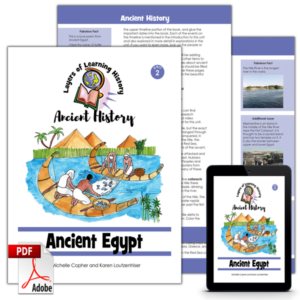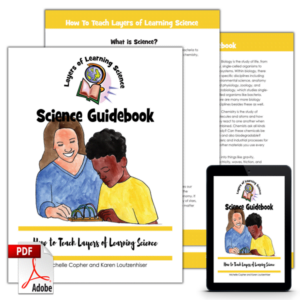Plants is the third unit in the Biology course. In this unit you will learn about simple plants like mosses and ferns, conifers, flowering plants, and fungi.
This unit has sections on:
- How Plants Work
- Simple Plants
- Conifers
- Flowering Plants
- Fungus
Learning By Doing
This is an activity based curriculum, where you learn by doing. Here are a few of the activities to choose from in this unit:
- Color and label a diagram of the parts of a plant then go outside with your Science Notebook and find the parts on many different types of real plants
- Make a paper folding model of a plant cell
- Watch a seed grow, making sketched of the process
- Color a diagram of a cross section of a leaf and then use a microscope to look at the real thing
- Make an interactive life cycle of a fern foldable
- Make a model of the layers of a tree trunk
- Identify the local native trees where you live
- Make a flower craft to learn about the parts of a flower and then dissect a real flower
- Observe the differences between monocot and dicots when you dissect seeds and then watch the two types of plants sprout
- Make mushroom spore prints
- And so much more!
Each Layers of Learning Science unit includes library lists of books, a family read-aloud suggestion, hands-on activities, printables and paper crafts, sidebars for extra learning, and tools to help you assess student’s progress and mastery. You can learn more about how Layers of Learning works in the Curriculum Guide. You may also want to purchase the Science Guidebook for even more information on how to teach and learn with Layers of Learning Science.
See Inside
Here is a two-page spread from Plants:

Sidebars with extra learning ideas and facts line the center section of lesson plans and hands-on activities. This is a pick-and-choose curriculum so you decide on the things that will fit your interest and needs. Along with your hands-on activities you will be reading books from the Library List and watching videos from the YouTube playlist. The reading and videos serve as the lecture and the activities serve as hooks to make learning deeper and memorable . . . not to mention fun.
Flexibility
This unit was written to be used for a month but contains plenty of content for many more weeks of learning if you choose. This is a pick-and-choose curriculum, meant to be cycled back to in the future when your child is older. As such, it intentionally includes far more material than you can possibly cover in a month.
Plants is also part of the overall Biology course, the second Year of the four year Layers of Learning Science cycle. If you use the program in order, it will take you though the four branches of science from Earth & Space to Biology to Chemistry to Physics in a logical progression where skills are learned and then practiced and used. However, each unit stands alone and can be used independently of any other unit and in any order.
Printable Pack
This unit comes with a downloadable Printable Pack that includes all the student worksheets. The printables can be copied as many times as needed for your family or class.
You can download the Printable Pack from your receipt or from your account at Layers of Learning.

Extra Resources
This unit comes with extra weblinks and a YouTube video playlist on the Biology Resources page.





















Kaya Seaton –
I have 2 non-science loving students, and 1 budding scientist. This unit had options for both. My science phobic kids were able to touch and feel the plants, and had many “ah-ha!” moments. They were amazed at how much they remembered from the unit. My science loving child spent hours looking at plants, and pointing things out on our walks.This has been a great fit for a wide range of ages and interests.